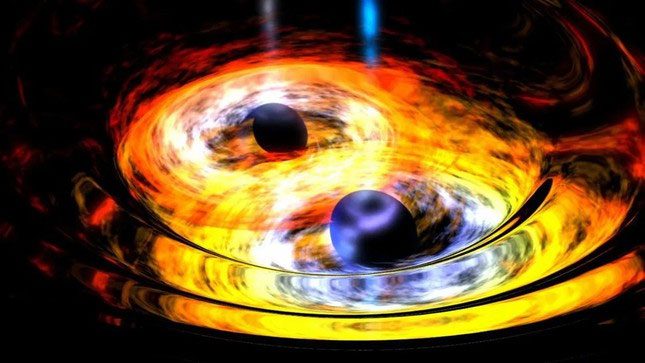Researchers have identified a new speed limit for the most extreme collisions in the universe.
According to a study published in the journal Physical Review Letters, the “maximum possible recoil speed” when black holes collide exceeds a staggering 102 million km/h – approximately 1/10 the speed of light.
Next, the researchers hope to mathematically prove that this speed cannot be exceeded by utilizing equations from Einstein’s theory of relativity, which has potential implications for the fundamental laws of physics.

According to the authors of the study, this peak occurs when the collision conditions reach a critical point between two black holes, either merging together or dispersing as they approach each other.
Co-author Carlos Lousto, a professor of mathematics and statistics at the Rochester Institute of Technology (RIT) in New York, USA, stated: “We are merely sketching the surface of what could be a more universal description. This newly discovered speed limit could be part of a larger set of physical laws affecting everything from the smallest objects to the largest in the universe.”
When two black holes pass close to each other, they will merge or orbit around a common center of mass before flying apart. Whether the black holes move apart or spiral into each other depends on their separation at the closest approach.
To determine the maximum possible recoil speed of black holes flying apart, Lousto and co-author James Healy, a research collaborator at RIT’s School of Mathematics and Statistics, used supercomputers to run numerical simulations. These calculations incorporated the equations of general relativity that describe how two interacting black holes would evolve.
Lousto explained that although attempts to solve these equations numerically began over 50 years ago, the numerical techniques to predict the size of gravitational waves from such collisions were not developed until 2005, just 10 years before gravitational waves were first detected by the Laser Interferometer Gravitational-Wave Observatory (LIGO).
Since then, LIGO has observed nearly 100 black hole collisions. Comparing the data from such a collision with numerical data shows that the trajectory of the black holes is “eccentric” or elliptical.
Previously, scientists believed that black holes approaching each other would spiral inwards along nearly circular orbits. The discovery of elliptical orbits has expanded the range of possible collision events and prompted researchers to search for extreme collision scenarios.
Imre Bartos, an associate professor in the Department of Physics at the University of Florida, USA, remarked: “The recoil of black holes after they merge is an important part of their interaction.” This interaction is particularly significant in regions of the universe with a high density of black holes, as significant recoils can completely expel a remaining black hole from the area.
New Fundamental Physics
According to Lousto, the “critical point” that determines whether two colliding black holes will merge or recoil can lead to slight alterations in the trajectories of the black holes.
For this reason, Lousto likens the interaction to a smooth phase transition, similar to the second-order phase transition of magnetism and superconductivity, in contrast to the first-order explosive phase transition of boiling water, where a finite amount of latent heat is absorbed before it boils.
The researchers also glimpsed what could resemble the characteristics of scaling factors of these phase transitions, although higher resolution simulations are needed to clearly identify these factors.
However, these aspects of the results suggest the possibility of an “overarching principle” applicable at all scales, from atoms to colliding black holes, Lousto noted.


















































